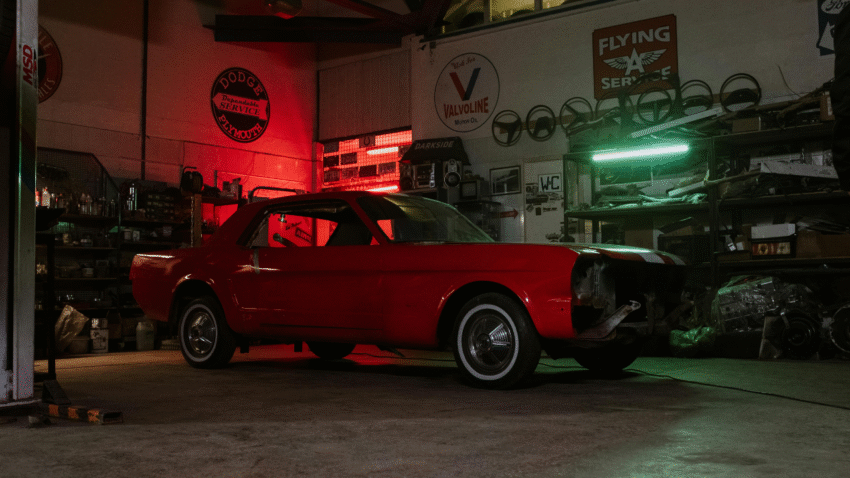Introduction
If your garage floor is crowded with tools, bikes, extension cords, and garden equipment, it’s time to put your walls to work. Learning how to add wall hooks for storage is one of the simplest and most affordable ways to get organized. Wall hooks keep items off the floor, improve accessibility, and help you use vertical space more efficiently—transforming a cluttered garage into a functional workspace.
Why Wall Hooks Matter for Garage Storage
Wall hooks are more than just a convenience—they’re a game-changer for garage organization:
- Maximize Vertical Space – Free up valuable floor area for vehicles, workbenches, and larger equipment.
- Improve Accessibility – Keep frequently used items within easy reach.
- Enhance Safety – Reduce tripping hazards by keeping items secured against the wall.
- Customizable Solutions – Available in various sizes and shapes for tools, bikes, hoses, ladders, and more.
Whether you’re hanging a heavy ladder or just need a spot for extension cords, there’s a wall hook option that will work for you.
Step-by-Step Guide to Adding Wall Hooks for Storage
1. Plan Your Storage Layout
Before buying hooks, decide what you want to hang. This will help you determine:
- Hook Type – Heavy-duty hooks for bikes or ladders, small utility hooks for hand tools.
- Hook Placement – Group similar items together (e.g., garden tools in one area, sports gear in another).
- Wall Space – Choose open, accessible areas without electrical panels, switches, or plumbing behind them.
Tip: Leave enough clearance between hooks to prevent items from overlapping.
2. Choose the Right Hooks for Your Needs
Popular garage wall hook options include:
- Utility Hooks – General purpose for cords, hoses, or bags.
- Double Hooks – Ideal for holding heavier or larger items.
- Bike Hooks – Designed to hang bicycles vertically or horizontally.
- Ladder Hooks – Heavy-duty options that hold weight securely.
- Specialty Hooks – Custom shapes for tools like shovels, rakes, or sports gear.
Look for hooks with a rubber or vinyl coating to protect items from scratches.
3. Select the Mounting Surface
Most garage hooks can be mounted on:
- Wood Studs – Strong and ideal for heavy loads.
- Drywall – Works for lighter loads if paired with wall anchors.
- Masonry Walls – Requires masonry screws or anchors.
Safety Note: Always check weight capacity before hanging heavy items.
4. Gather Tools and Materials
You’ll typically need:
- Hooks (appropriate type and size)
- Screws (often included with hooks)
- Drill and drill bits
- Level
- Stud finder
- Pencil for marking
- Wall anchors (for drywall or masonry installations)
5. Mark Your Hook Placement
- Use a stud finder to locate studs for heavier items.
- Mark drill points with a pencil.
- Use a level to ensure hooks will be straight and evenly spaced.
6. Install the Hooks
For Wood Studs:
- Drill a pilot hole slightly smaller than the screw diameter.
- Align the hook with the pilot hole.
- Drive the screw through the hook bracket into the stud.
For Drywall (Light Loads):
- Mark the placement and drill a hole for the anchor.
- Insert a wall anchor until flush with the wall.
- Secure the hook with screws into the anchor.
For Masonry Walls:
- Drill holes using a masonry bit.
- Insert masonry anchors.
- Attach hooks using screws designed for masonry.
7. Test the Hooks
Before hanging your items:
- Apply gradual pressure to make sure the hook is firmly in place.
- Check for any wobbling or loose screws.
- Adjust or tighten as needed.
8. Hang and Organize Items
Group items logically:
- Garden tools – Rakes, shovels, hoes on large utility hooks.
- Sports gear – Bats, helmets, and bags on smaller hooks.
- Extension cords & hoses – Looped neatly on single hooks.
- Bikes or ladders – Mounted using heavy-duty double hooks.
Common Mistakes to Avoid
- Ignoring Weight Limits
- Problem: Hooks pull out of the wall.
- Solution: Match hook type to the item’s weight and mount heavy items to studs.
- Placing Hooks Too Close Together
- Problem: Items overlap or are hard to remove.
- Solution: Space hooks to allow easy access.
- Skipping Wall Preparation
- Problem: Hooks loosen over time.
- Solution: Clean and inspect the mounting area before installation.
- Not Using Anchors on Drywall
- Problem: Hooks tear out with use.
- Solution: Use proper wall anchors for secure installation.
- Overloading a Single Hook
- Problem: Damages hook and wall.
- Solution: Distribute weight across multiple hooks.
Extra Garage Tips & Hacks
- Combine Hooks with Pegboard – Offers flexibility to rearrange hooks as storage needs change.
- Label Hook Zones – Helps everyone know where items belong.
- Install Hooks at Different Heights – Make frequently used tools easy to grab and heavier items safer to store lower.
For even more garage storage ideas, check out our guide on maximizing vertical storage space in your garage to combine hooks with shelves, pegboards, and racks.
Conclusion
Adding wall hooks for storage is one of the quickest ways to organize your garage and make it safer. By choosing the right hooks, installing them properly, and grouping items logically, you can reclaim floor space and create a clutter-free environment.
Pro Tip: Keep a few extra hooks on hand so you can quickly expand your storage as needed. Bookmark this guide so you’ll always have a step-by-step reference for installing hooks the right way.
